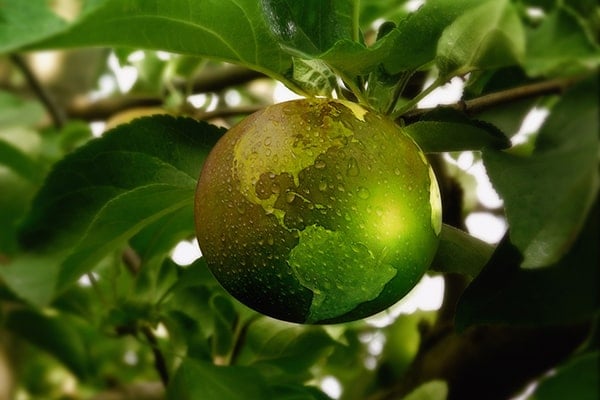
The act of gardening engages people with nature in a healthy and constructive manner. However, there are some ways of maintaining a garden that can affect the environment in a harmful way. These harmful effects can be the result of the pollution from petrol-fuelled lawn mowers that enter the atmosphere, chemical fertilisers, and even water wastage from keeping plants watered. Fortunately, there is a common concern most gardeners have that has created the demand for gardening tools, products, and gardening methods that make the gardening process more eco-friendly. The following information includes tips for becoming a more eco-friendly gardener, by using eco-friendly gardening methods.
Planting indigenous plant species is one way to lessen the negative effects of gardening upon the environment. Typically, indigenous flowers and plants are suited to the environment, atmosphere, and soil so they require less maintenance than non-indigenous plants. This means there will be less water waste and a lesser need for chemicals than is required to keep up the artificial conditions for unfamiliar plants. Indigenous plants, therefore, thrive in the garden while minimising waste and the negative spread of unnatural or harmful materials to the environment; they are more eco-friendly. An example of going native with plants is getting rid of the lawn at home, whether located in a dry, arid climate or one that experiences all four seasons. It may be appropriate to plant cactus gardens in one location and to plant bottlebrush grasses in another. Instead of having to maintain a lawn that is not natural, install plants that are adapted to the local conditions. They will be easier to maintain and typically require less fertiliser and water.
Harvesting rainwater with a water butt or water barrel will add to the eco-friendly aspect of the garden. It is generally inexpensive and practically effortless to capture water that is mineral free and chlorine free for watering gardens and doing other activities like washing cars and rinsing windows. Harnessing rainwater from downspouts or off the roof of a shed or greenhouse not only reduces water costs but will help the environment by reducing water runoff as well as preventing erosion and even flooding. The use of collected rainwater also reduces water waste that comes from using a hose, which consumes a large volume of water, to water gardens. Drip watering systems can even be set up that are attached to water butts, providing water to plants on a schedule or gradually over time. When using a water barrel to collect rainwater, place a screen atop the barrel to prevent insects, debris, and bird droppings from getting in the water. Also, use the water supply frequently to keep it aerated, moving, and fresh with new rainwater.
Growing food for consumption is another way to make a more eco-friendly garden. Growing fruits and vegetables at home is not only highly enjoyable, but it is another way to move away from manicuring a lawn with water, fertilisers, and pesticides and moving toward using gardens as food sources. This does not even require a great deal of space so people with limited outdoor space can still counter the harmful gardening methods. Simply grow a small amount of potatoes, carrots, tomatoes, or herbs in small containers or vertical planters. Herbs, in particular, are vital to attracting certain wildlife like bees to the garden. This can help to deal with harmful garden pests instead of using chemical means. Furthermore, growing food at home cuts back on general food consumption and it saves money. Since growing food for consumption is the most enjoyable part of making a greener garden, here is a mini-guide to getting started straight away on growing a couple of spring vegetables.
Cool season spring crops are those that can be planted either directly in the soil with no cover, in pots/trays in a sunny window or on a porch, or directly in the soil, but beneath a low tunnel or row cover. The benefit of planting in pots and trays is they can be moved outdoors into the sun on warm days and returned to the safety of the indoors at night or when frost is threatening. Planting under a low tunnel or row cover will help the soil warm more quickly and will protect seed lines from mild frosts. Two vegetables that are ideal for early spring plantings include spinach and lettuce:
Spinach
Spinach grows particularly well when planted under row covers and is generally quite frost-resistant. Grow the spring greens close together and harvest the leaves when they are still small. This can be as few as three weeks from planting.
Lettuce
While lettuce can be grown into a head, like the familiar supermarket head of lettuce, growing baby greens is easier, quicker, and will provide an almost constant supply of salad greens from the spring and deep into the summer. Use mixed lettuce seed and sow the seeds very close together in each row. This will yield solid rows of lettuce leaves that are very easy to harvest and can be cut repeatedly throughout the season. Since baby greens can be harvested in a couple of weeks after planting, the seeds should be planted in successions of every week or two, thus providing a constant supply of greens.




